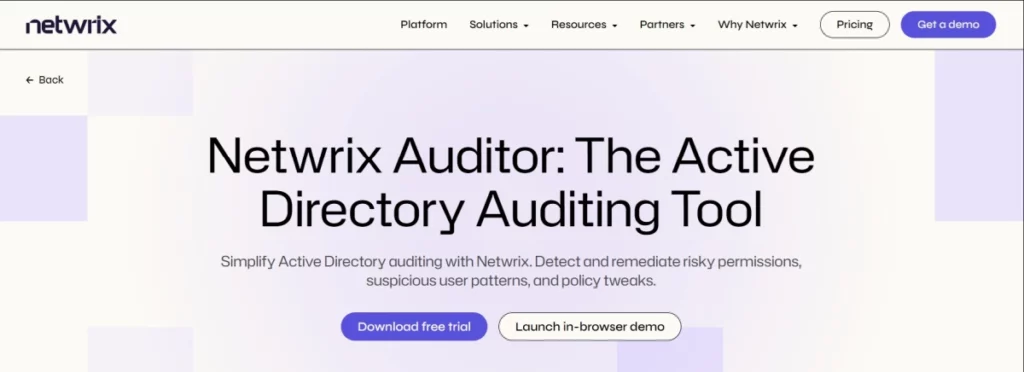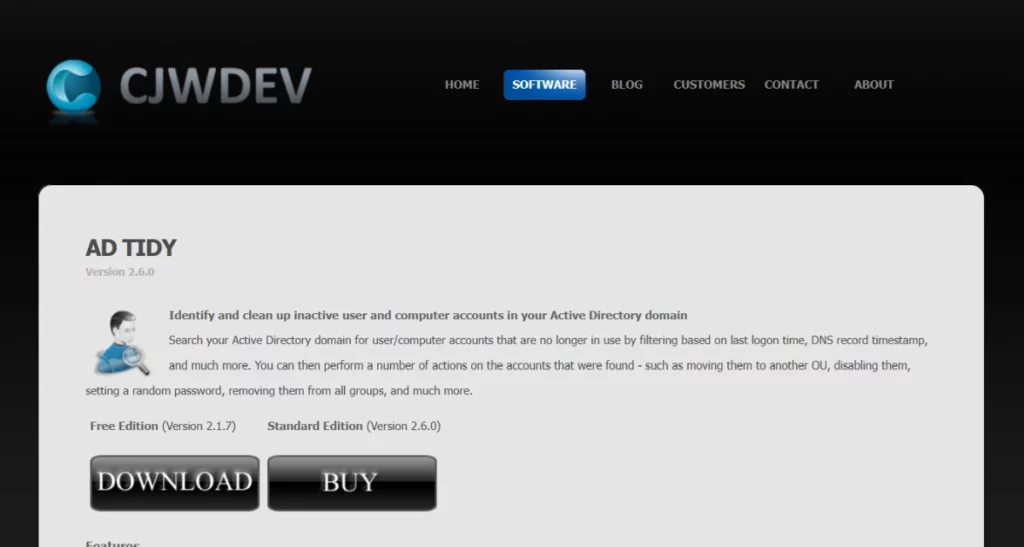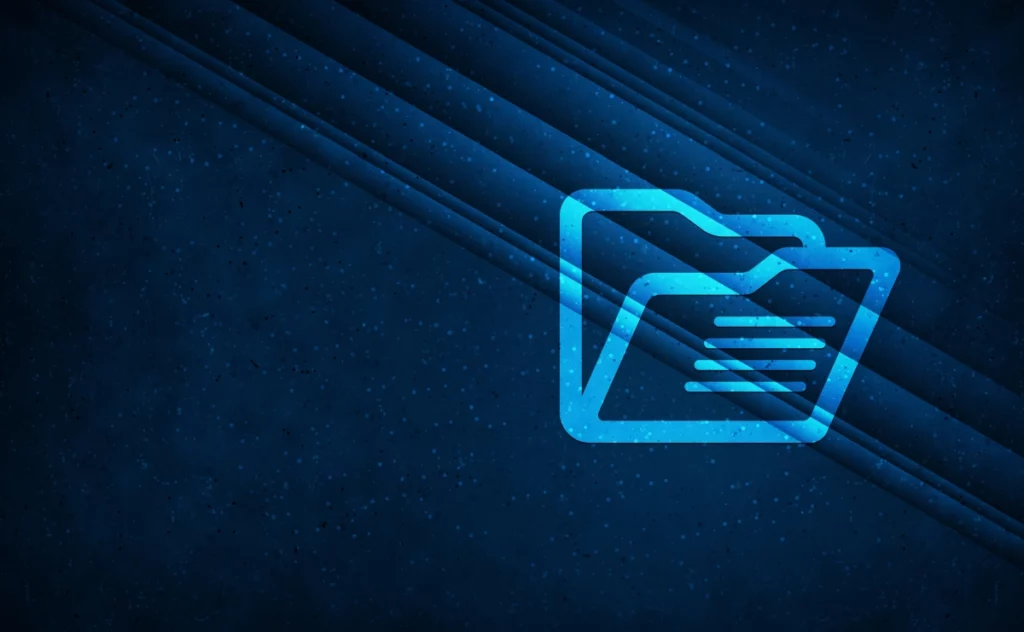Active Directory (AD) has remained a staple of IT infrastructure for so many years. Many businesses use Active Directory tools to handle user access, devices, and security policies in one place. However, as modern business environments continue to expand and become more complex, native Active Directory tools alone cannot do the work.
IT administrators are always on the lookout for ways to handle user provisioning, group management, auditing, automation, and compliance. Admins are looking for free or freemium Active Directory tools that can help them streamline Active Directory management without spending too much on expensive software.
This is the reason why Active Directory tools exist. In this blog post, we will cover some free Active Directory tools that can help IT teams solve real-world challenges like cleanup, visibility, group management, and hybrid integration.
From lightweight scripts to full-featured platforms, Active Directory tools can help your IT team maintain an efficient and secure directory space.
Take control of your IT assets

Free Active Directory tools to look for in 2026
Let’s discuss the list of the top free Active Directory tools you need to watch out for in 2026:
1. Netwrix Auditor Community Edition (Free AD auditing tool)

Netwrix Auditor offers a powerful, free version of its auditing tool, providing visibility into user activity, permissions, and changes made within Active Directory. It’s considered an excellent tool for IT teams looking to enhance their AD security posture without a hefty investment.
Why you’ll actually use it in 2026:
- Comprehensive audits: Netwrix Auditor tracks changes made to users, groups, and policies in real-time, helping prevent unauthorized changes.
- Ease of use: This Active Directory tool offers actionable reports and alerts that are easy to set up and use.
- Free-tier strengths: The Community Edition is free for smaller environments, making it an ideal choice for teams that want a basic audit without incurring the costs associated with expensive enterprise versions.
Strengths and weaknesses of Netwrix Auditor Community Edition
Strengths
- Excellent change‑tracking in Active Directory and GPOs, capturing who/what/when/where.
- The community free version is suitable for smaller environments and provides broad system visibility (users, groups, policies).
- Customizable alerts and audit reports enhance compliance readiness.
Weaknesses
- The free edition has feature limitations compared to paid versions (less interactive reports, fewer integrations).
- Some users report performance/contact‑resource use issues in larger environments.
- Primarily focused on on‑premises AD; hybrid/cloud identity support may require add‑ons or integration work.
Example: How Netwrix simplifies auditing
Imagine a scenario where you need to find out who granted domain admin rights to a user last week. Instead of going through event logs, Netwrix Auditor will help you show the full trail: who made the change, what object was modified, and when.
In the event of suspicious activity, such as a group membership being added at midnight and some changes being made, Netwrix flags it immediately for you, allowing you to respond before it becomes a breach.
2. Specops Gpupdate (Free group policy management)

Specops Gpupdate is a must-have Active Directory tool for IT professionals who manage complex Group Policy Objects (GPOs). It allows for remote and secure GPO updates without requiring users to log off or interrupt their workflow.
Why you’ll actually use it in 2026:
- Remote GPO updates: This Active Directory tool allows administrators to update GPOs on multiple machines without disrupting user activity.
- Free features: While Specops offers premium features, the free version supports essential remote updates for GPOs, saving time for administrators.
Strengths and weaknesses of Specops Gpupdate
Strengths
- Enables the remote refresh of Group Policy Objects (GPOs) across endpoints without requiring user logoff or manual execution — improving enforcement speed.
- The free version supports core GPO workflows, which is very useful in large Windows-centric environments with frequent policy updates.
Weaknesses
- Focused solely on GPO refresh/management rather than full Active Directory lifecycle or identity management.
- May not fully support hybrid or cloud‑native AD setups (e.g., Azure AD) where GPOs are less relevant.
- Additional scripting or coordination may be required for complex environments or cross‑platform endpoints.
Example: How Specops speeds up GPO enforcement
Suppose your security team pushes a new password complexity policy. Typically, you’d wait for users to log off or manually force an update. With Specops Gpupdate, you can remotely trigger a policy refresh across all targeted systems at once, ensuring compliance takes place within minutes, not days.
3. Microsoft RSAT / AD PowerShell Module (Essentials for AD Management)

The Remote Server Administration Tools (RSAT) suite, including the AD PowerShell module, remains one of the most powerful free resources for managing Active Directory in 2026. While Microsoft has made its tools more comprehensive for hybrid environments, it’s still a must-have for many sysadmins.
Why you’ll actually use it in 2026:
- Powerful command-line management: The AD PowerShell module gives you detailed management of Active Directory.
- Cloud & on-prem support: Using RSAT, you can manage both Azure AD and on-premises environments from a single interface.
- Free & built-in: RSAT tools are included with Windows Server and Windows 10/11, so there’s no cost involved.
Strengths and weaknesses of Microsoft RSAT / AD PowerShell Module
Strengths
- Native Microsoft tooling with deep control over AD, user/group provisioning, scripting, and configuration.
- Free and built‑in with Windows Server/Windows 10‑11 — no additional licensing cost.
- Supports hybrid identity when paired with Azure AD modules and appropriate scripting.
Weaknesses
- Steep learning curve and primarily suitable for experienced domain administrators rather than general IT staff.
- While powerful for on‑premises, hybrid/cloud setups often require additional tools, modules, or manual bridging.
- No built‑in UI for broader device/software asset visibility, license management, or SaaS usage tracking — it remains a pure directory management tool.
4. CJWDEV AD Tidy (AD cleanup tool)

AD Tidy is a lightweight, open-source tool designed to identify and clean up orphaned or stale Active Directory objects. It’s a simple solution that can help reduce clutter in your AD environment.
Why you’ll actually use it in 2026:
- Easy cleanup: AD Tidy helps you quickly identify unused user accounts, empty groups, and stale computer accounts.
- Free and open source: As an open-source tool, AD Tidy allows you to customize it to fit your environment without paying for extra features.
Strengths and weaknesses of CJWDEV AD Tidy
Strengths
- Lightweight and specialized for cleanup: inactive users, empty groups, disabled computer accounts — helps reduce clutter and security exposure.
- Open-source/free availability makes it accessible to smaller IT teams or cost-sensitive environments.
Weaknesses
- Very narrow scope (cleanup only), not a complete Active Directory management solution.
- The free version may lack support, advanced features, or timely updates, especially in evolving hybrid/cloud identity environments.
- Doesn’t address device, software, SaaS, or broader identity/asset integrations.
Example: How AD Tidy keeps your AD organized
If your organization hasn’t removed old accounts in a while, AD Tidy can quickly scan your entire directory and show you which users haven’t logged in within 90 days. You can choose to disable, move to a quarantine OU, or delete them in seconds, keeping your directory organized and reducing security exposure..
5. ADACL-Scanner (Free active directory permissions tool)

ADACL-Scanner is an open-source Active Directory permissions scanner that helps administrators quickly identify who has access to what in their AD environment.
Why you’ll actually use it in 2026:
- Permissions analysis: ADACL-Scanner finds permissions that may be misconfigured or excessive, helping teams maintain a secure AD environment.
- Free & Open Source: Similar to AD Tidy, this Active Directory tool is free and customizable, providing flexibility for IT teams.
Strengths and weaknesses of ADACL‑Scanner
Strengths
- Focused on permissions analysis and mis‑configuration detection in Active Directory — helps identify excessive privileges and access sprawl.
- Free and open‑source, making it accessible for smaller teams or cost‑constrained environments.
- Customizable scanning and export capabilities allow you to tailor the tool to your AD environment and audit needs.
Weaknesses
- Narrow scope — limited to ACL/permissions scanning; it doesn’t cover broader AD management tasks like provisioning, device tracking, or hybrid/cloud identity.
- Being open-source can mean fewer vendor-driven updates, limited formal support, and potential architectural gaps in complex or evolving AD environments.
- May require more manual effort or integration work to tie its output into larger workflows (e.g., device/license management, automation, or SaaS usage) compared to full‑platform tools.
Example: How ADACL-Scanner strengthens security
Imagine this situation. Your compliance officer requests a list of all individuals with write access to the Finance OU. With ADACL-Scanner, you can run a quick scan and export the permissions list to a CSV file. It shows not only the expected admins but also a few service accounts with outdated privileges. You can fix those in minutes, eliminating a potential security hole before auditors notice.
Comparison table: Free Active Directory tools for IT leaders
| Tool | Best For | Key Features | Hybrid / Cloud AD Support | Example Scenario | Pricing Model |
| Netwrix Auditor (Community Edition) | Real-time auditing and compliance visibility | Tracks AD changes (who/what/when); prebuilt audit reports; alerting system | ⚙️ Supports Azure AD via connectors | Need to find who changed group policies last week? Netwrix shows the full audit trail instantly | Free (Community Edition) |
| Specops Gpupdate | Remote Group Policy management | Instantly refreshes or enforces GPOs remotely across endpoints | ⚙️ Works in hybrid and on-prem environments | After rolling out a new password policy, trigger a remote GPO refresh across all systems without waiting for reboots | Free |
| Microsoft RSAT / AD PowerShell Module | Command-line and admin console management | Deep PowerShell control over users, groups, and domains; integrates with Azure AD | ✅ Native support for hybrid AD | Admins can script automated user provisioning and group assignment via PowerShell cmdlets | Free & Built-In |
| CJWDEV AD Tidy | Cleanup of stale users and computers | Finds inactive or disabled accounts, empty groups, and expired passwords | ⚙️ Works for on-prem and synced hybrid AD | Scan for users inactive >90 days, disable or move to quarantine OU in seconds | Free & Open Source |
| ADACL-Scanner | Permissions visibility & least-privilege enforcement | Scans and exports AD ACLs; identifies excessive or misconfigured access | ⚙️ On-prem compatible; can scan hybrid AD permissions | Export list of all users with write access to Finance OU; detect and fix outdated service accounts | Free & Open Source |
Download the detailed comparison guide from here.
Streamline your IT operations
Where EZO AssetSonar fits into your AD workflow

Now that we’ve covered the best free Active Directory tools for 2026, it’s important to address a reality many mid-market IT teams face: Identity alone is no longer enough.
Active Directory helps you manage users, groups, and authentication. But modern IT teams also need visibility into:
- Which devices do those users actually own?
- Which software licenses are assigned?
- Which SaaS apps have they activated?
- Has offboarding cleaned up everything tied to identity?
- Whether assets remain compliant after access changes?
This is where EZO AssetSonar comes in.
EZO AssetSonar is an IT asset management (ITAM) platform that integrates with free Active Directory tools via REST-based API integration to complete the user-device picture. It enhances AD management by integrating seamlessly with your AD environment, allowing you to track and manage users, devices, and software on a single platform.
EZO AssetSonar also natively connects with other directory services, including Microsoft Entra ID, LDAP, SAML-based SSO (ADFS), and MDM tools like Intune and Jamf.
What this integration unlocks
When AD updates a user, EZO AssetSonar can:
- Auto-assign devices to newly added employees in AD or reclaim devices from those that have been offboarded
- Update ownership of devices between employees with time-stamped trails for compliance reporting
- Trigger end-to-end offboarding workflows that AD alone cannot perform
- Reclaim SaaS and software licenses based on AD onboarding/offboarding events
- Provide a unified view of identity, device, software, and access controls
Here’s why you’ll actually use it in 2026:
- Unified view with multi-tool integration: EZO AssetSonar integrates with both on-prem and cloud-based assets, including MDMs, Active Directory tools, and widely-used SaaS suites. This hybrid integration allows your team to gain visibility into the entirety of your IT environment, not just your AD.
- Automation & cleanup: By integrating with AD, EZO AssetSonar automates critical tasks like user account cleanup and license reclamation. It flags inactive accounts, unassigns unused devices, and reclaims software licenses, helping to reduce the manual overhead of AD administration.
Strengths and weaknesses of EZO AssetSonar
Strengths
- Real‑time asset management across hardware, software, and SaaS, which improves AD hygiene by linking users/devices/licenses.
- Clear upgrade path: you can scale as your IT ecosystem (including AD integrations) grows.
- Strong focus on compliance, license optimization, and workflow automation. This is valuable when leveraging AD data for offboarding, account cleanup, and device reclaiming.
Weaknesses
- Initial setup and integration (including custom fields or workflows) can require time and implementation resources.
- Some users report that certain UI elements or reporting customizations are less flexible than desired.
- Mobile agent or non‑Windows endpoint support could be improved according to some reviews.
- Because it spans multiple domains (hardware, software, SaaS, and AD integration), the full value may only be realized after an initial configuration and cleanup effort.
Example: How AssetSonar works in action
Let’s consider this scenario: Your IT team manages 1,000 hybrid users across a free Active Directory tool and some in Azure AD. Over time, inactive logins and outdated permissions pile up. EZO AssetSonar can integrate with both your free AD tool (via API) and Azure AD (natively) to automatically sync user and device data.
With AssetSonar, inactive accounts are flagged, and offboarding workflows are triggered automatically. As soon as a user leaves, EZO AssetSonar revokes their access, unassigns devices, and reclaims software licenses—all in alignment with your offboarding policies. This integration helps ensure that your AD and your devices remain clean and secure, without manual intervention—long after employees have left the organization.
When to use each AD platform in your IT environment
It’s important to understand that the right Active Directory tool/platform often depends on your IT environment’s specific needs. Here’s when each platform would make sense for IT managers:
- Microsoft RSAT / PowerShell Module: This AD tool is ideal for environments where advanced command-line control is necessary, or if your team needs to script and automate complex AD tasks across both on-prem and cloud (Azure AD). It’s most suitable for IT teams with sysadmins comfortable working with command-line tools and on-prem AD infrastructure. If you’re dealing with large-scale enterprise environments or highly customized AD setups, RSAT tools are a good fit.
- Netwrix Auditor CE: If your organization requires active auditing to track changes in user permissions, security, and compliance monitoring, Netwrix Auditor CE is perfect for compliance-focused environments. It excels in environments that need to maintain SOC 2 or HIPAA compliance, providing visibility into AD changes and tracking user activity for regulatory audits.
- Specops Gpupdate: Ideal for environments heavily reliant on Group Policy Objects (GPOs). If your IT team is managing multiple systems, with a high volume of policy updates (especially in Windows environments), Specops Gpupdate provides a non-disruptive solution to update GPOs without requiring users to log off, making it a great fit for large enterprise setups where policy enforcement is crucial for security compliance.
Choosing the right Active Directory Tool for 2026: Criteria and decision guide
Before diving into the top free Active Directory tools for 2026, it’s essential to understand the criteria for selecting tools that you’ll actually use. Choosing the right AD management solution isn’t just about the number of features—it’s about matching the tool to your environment, maturity level, and biggest IT pain points.
Criteria for “Tools You’ll Actually Use” in 2026:
Practicality
The first thing to check is how practical the Active Directory tool is. You need tools that address real IT pain points, such as cleanup, visibility, and user/group management. If the tool doesn’t solve a problem or integrate with your existing systems, it’s unlikely you’ll use it long-term.
Hybrid/Cloud-readiness
With most businesses adopting hybrid or cloud-first infrastructures, it’s essential to use tools that support both on-prem AD and cloud-based identity management solutions like Azure AD or Okta. Make sure the tool you choose works across both on-prem and cloud environments, as this will be the norm for IT teams in 2026.
User trust
User trust is a critical factor. Always choose tools that have strong community support and positive reviews from trusted platforms like G2, Capterra, and Reddit. Tools with active user communities are likely to be more reliable and evolve with the needs of IT professionals.
Free or freemium licenses
Consider tools that offer robust free functionality or freemium models with valuable features. Free versions allow you to get started without upfront costs, and if you need more advanced features later, the freemium model makes it easier to scale up.
ITAM‑AD integration
If you already have an IT asset management (ITAM) solution in place, check whether it integrates with AD tools or supports AD connectors. A tool that integrates your directory data, devices, software, and SaaS usage into one platform can reduce silos, increase visibility, and enable automation. This integration often determines how easily you can scale from basic directory hygiene to broader IT asset governance.
How to choose the right AD tool for your environment in 2026
Selecting the best Active Directory management tool for your team is more about matching unique IT environment than simply picking the tool with the most features. Whether your team is responsible for 100 users or 10,000, the tool that will benefit your organization most is one that helps you eliminate repetitive tasks, improve visibility, and reduce security risks. Here’s a quick guide to help you choose the best tool:
1. Evaluate your pain points
Start by identifying where your team struggles the most:
- User account cleanup: Are there inactive accounts lingering from employees who left months ago? Tools like CJWDEV AD Tidy can automate cleanup and prevent access creep.
Example: A mid-sized retail company found 700 inactive accounts that still had VPN access. Using CJWDEV AD Tidy’s cleanup utility, they disabled all of them in under an hour. This is something that previously took the company two days manually.
- Visibility & reporting: If you struggle to understand who has access to what, Netwrix Auditor or ADACL-Scanner can give you actionable visibility into permissions and changes.
Example: An IT manager preparing for an internal security audit ran ADACL-Scanner and discovered two legacy service accounts with write permissions to the Finance OU — an immediate security fix.
- Automation: If your IT staff spends hours provisioning users or resetting passwords, a tool like EZO AssetSonar can automate provisioning, revocation, and license reassignment.
Example: When onboarding 50 new hires, an IT admin used EZO AssetSonar’s AD sync and workflow triggers to automatically assign devices and software licenses — turning a multi-day task into a one-hour process.
- Compliance: If you think audits are stressful for your organization, you can use EZO AssetSonar’s reporting tools to centralize data and generate audit-ready reports instantly.
2. Consider hybrid or cloud needs
It is an inevitable truth that the modern IT landscape is no longer operating purely on-prem. Most organizations now manage a mix of on-prem AD and cloud identity providers like Azure AD, Okta, or Google Workspace. Your chosen tool must work across these boundaries.
- Hybrid environments: If your IT environment includes both on-prem AD and cloud platforms like Azure AD or SaaS applications, look for tools that can integrate seamlessly. EZO AssetSonar excels in this area by integrating both AD and Azure AD to give you a single source of truth for all users, devices, and licenses. EZO AssetSonar excels here by integrating AD, Azure AD, and MDM tools such as Intune and Jamf.
Example: A manufacturing firm using Azure AD for SaaS logins and on-prem AD for servers used EZO AssetSonar to maintain a single source of truth for all users and devices. This means the firm did not have to deal with any mismatched records or conflicting permissions.
- Cloud-first teams: If you’re moving toward SaaS-heavy operations, tools with API-based discovery like Netwrix will give you greater insight into cloud identity usage and application adoption.
Example: A software startup running 90% of its infrastructure in the cloud used Netwrix to monitor Azure AD changes and get notified instantly about suspicious admin privilege escalations.
3. Balance free vs. paid features
Free tools can go a long way, especially for small to mid-sized teams. However, as your environment expands, you may begin to realize you need advanced automation, analytics, or integrations that are only available in paid versions.
- Start free: You can begin with a targeted free tool to fix your most pressing issue. For example, you can use ADACL-Scanner for bulk account management or AD Tidy for the cleanup of inactive accounts.
- Scale up: As your organization scales, you may want to consider evaluating platforms like EZO AssetSonar, which can help integrate user provisioning, license management, and SaaS tracking into your AD management workflows, providing broader automation and deeper insights.
Example: An IT director at a logistics firm began using free AD cleanup tools but later upgraded to EZO AssetSonar’s paid tier after realizing it could also automate device tracking and license reclamation. As a result, the firm ended up saving $12K annually in unused software seats.
Parting thoughts
Active Directory management doesn’t have to be complicated or expensive. With the right set of free Active Directory tools, you can streamline your workflows, improve security, and maintain better visibility across your AD environment as you head into 2026.
ITAM tools like EZO AssetSonar, which integrate seamlessly with Active Directory, provide a holistic approach to IT asset management by combining directory hygiene with SaaS, device, and license management, ensuring your team can keep up with the demands of a hybrid world.
You can start with the tools on this list and pick one that solves your immediate needs, and then scale as you mature in your IT journey.





![[How to] Mass Deploy the AssetSonar Agent Using Microsoft Intune](https://cdn.ezo.io/wp-content/uploads/2021/09/20060637/As-blog-banner-19-Aug-scaled.jpg)
![[How-to] Configure Azure AD Single Sign-on (SSO) Integration With AssetSonar](https://cdn.ezo.io/wp-content/uploads/2020/10/Configure-Azure-AD-Single-Sign-on-SSO-Integration-With-AssetSonar.png)
![[How-to] Configure Secure LDAP For Azure AD Domain Services](https://cdn.ezo.io/wp-content/uploads/2019/10/LDAP-for-AD-domain-services.png)



